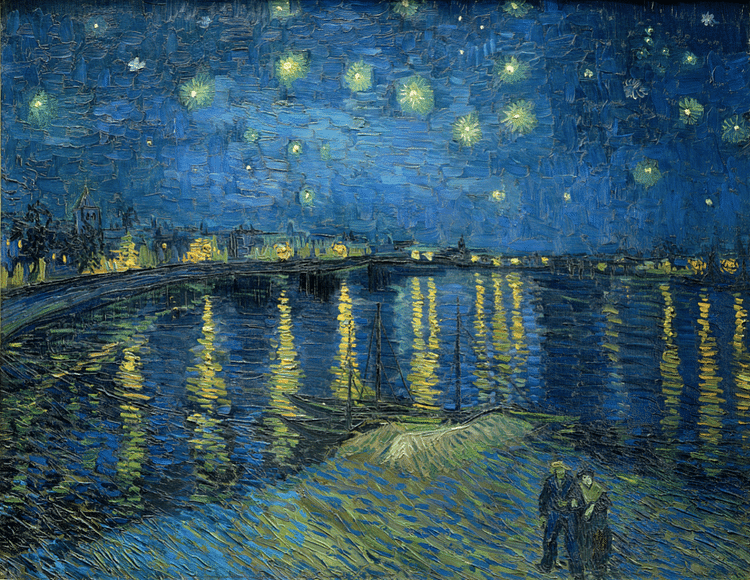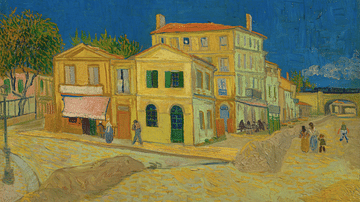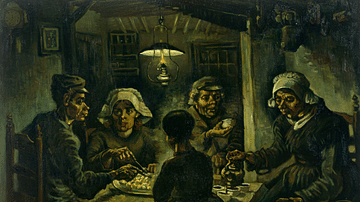Illustration
An 1888 oil on canvas painting, Starry Night over the Rhône, by Vincent van Gogh (1853-90), the Dutch post-impressionist artist. Painted in September in Arles, southern France. His letters reveal that Vincent had planned for some time to make this night scene but was worried over the difficulties of painting it plein air (in the open air), the typical technique of impressionists. Keen to avoid black to represent night, the artist instead uses a wide range of blues: Prussian blue, cobalt, and ultramarine. Once again, he uses a starkly contrasting but complementary colour scheme of yellow and blue. The pair of lovers in the corner is significant, as revealed in the following passage in a letter from Vincent to his brother Theo written in the same month this scene was created:
To express the love of two lovers by the marriage of two complementary colours, their blending and their contrast, the mysterious vibrations of related tones. To express the thought of a brow by the radiance of a light tone against a dark background. To express hope by some star. (LT 531F)
(Musée d'Orsay, Paris)
Cite This Work
APA Style
d'Orsay, M. (2022, March 17). Starry Night over the Rhône by van Gogh. World History Encyclopedia. Retrieved from https://www.worldhistory.org/image/15468/starry-night-over-the-rhone-by-van-gogh/
Chicago Style
d'Orsay, Musée. "Starry Night over the Rhône by van Gogh." World History Encyclopedia. Last modified March 17, 2022. https://www.worldhistory.org/image/15468/starry-night-over-the-rhone-by-van-gogh/.
MLA Style
d'Orsay, Musée. "Starry Night over the Rhône by van Gogh." World History Encyclopedia. World History Encyclopedia, 17 Mar 2022, https://www.worldhistory.org/image/15468/starry-night-over-the-rhone-by-van-gogh/. Web. 17 Jul 2025.







